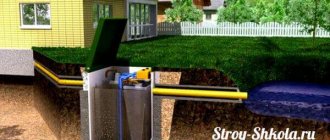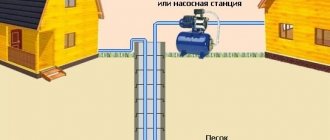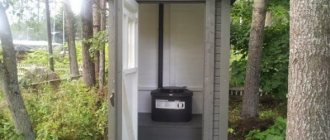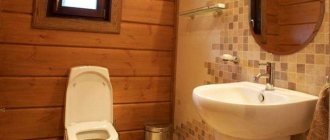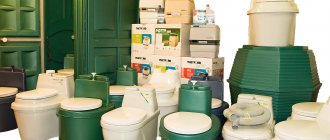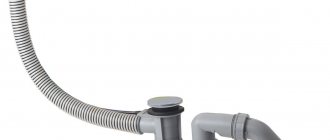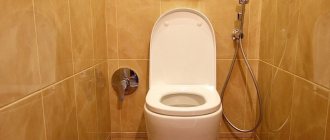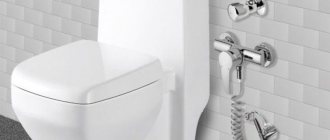Geotextiles are becoming a universal raw material. It is used both in construction and in the installation of various sewage systems. This material comes in various types. Geotextiles for drainage (geofabric) are popular. Before purchasing, you must study the characteristics and methods of use of the product.
This fabric is considered universal and suitable for many jobs.
Types of geotextiles
Let's start with the fact that the original purpose of geotextiles is to separate layers of various bulk building materials, that is, to prevent them from mixing with each other. Today, the functional focus of this product has expanded. Therefore, when talking about geotextiles, you need to understand that there are several varieties of it on the market. Or rather, the two main ones: woven and non-woven.
The first is a material made using weaving technology. These are threads of polypropylene or polyester, joined together on a loom at right angles. In essence, the result is a weaving fabric that is no different from other fabrics. Except, of course, raw materials.
The second variety on the market is represented by two types: needle-punched and made by thermal soldering of threads. Production of the first type is based on piercing the finished fabric with needles. The goal is to tighten and secure the threads using the quilting method. Production of the second type is based on thermal effects on fibers, which are arranged in a chaotic manner. By sticking together, they form a lattice structure in which the cells have different irregular shapes.
It should be noted that needle-punched material is more flexible than thermally bonded material. It also has high deformability.
Types of geotextiles Source aquagroup.ru
So, which geotextile to use for drainage from those described above. In principle, you can use any, because the material itself has characteristics that allow water to pass through it, plus not allow small particles of soil or other bulk material to pass through. At the same time, in the drainage system, geotextiles serve as a separator of filter layers.
But here, more often than not, the selection criterion is the price of the product. And this indicator for the woven geotextile variety is much higher than for the non-woven variety. Therefore, for drainage it is better to use the second option. We will talk about it further.
Black woven geotextile Source st19.stpulscen.ru
Needle-punched geotextiles are an indispensable solution for private construction
To produce needle-punched geofabric, both short and continuous polymer fibers are used. The mechanical method of fastening fibers simultaneously gives the fabric both strength and a high filtration coefficient. This significantly expands the scope of its application. Considering that modern technologies make it possible to produce material with specified density parameters, it is difficult to find a more suitable synthetic fabric for private construction than needle-punched polyester geotextiles.
Characteristics of non-woven geotextiles
There are several technical and operational characteristics that you need to pay attention to first.
- Density of the material.
- Strength.
- Linear extension.
The density of geotextiles varies between 100-900 g/m². Anything above a density of 600 g/m² falls into the category of high-density geotextiles. Accordingly, this material is expensive. Therefore, it makes no sense to use it for the drainage system. Optimal for drainage is geotextile with a density of up to 350 g/m².
But if another question is asked: what kind of geotextile is needed for the foundation of the slab, then it is better to choose one with increased density. Because in this building structure the geofabric performs other functions, plus it is subjected to high loads. Why geotextiles are needed in the foundation, we will consider below. And now about other characteristics.
As for durability. This indicator depends entirely on the density of the material. For example, if the density is 100 g/m², then the strength is 100 N.
Physical and technical characteristics of geofabric Source besplatka.ua
Now about linear extension. It is clear that much will depend on the density and strength of the material. But we must give credit to the woven look. Its linear expansion does not exceed 15%. That is, this material, under any load, will not stretch more than 15% of its original length or width. For non-woven fabric this figure is much higher – 50%. That is why they try not to use the latter type in the construction of roads, car parks and slab foundations. That is, if you are faced with the question of what geotextile to use for the foundation of a monolithic slab, you can be sure - only woven.
Consideration of the general advantages of the material
An important advantage is the high level of resistance to aggressive environments, so the service life of the products when in the ground is very long. Due to sufficient elasticity, the material sheets do not tear on stones and other objects encountered during installation.
When filling with gravel, the geotextile is not damaged
The strength of geotextiles is very high. Plant roots, stones, soil movements and other light mechanical impacts are not capable of damaging the integrity of such canvases. Despite the increased strength characteristics, the material can be cut well with a regular knife.
The material is quite convenient to work with
The polymer layer retains its basic characteristics in the temperature range from -60 to +110 degrees, that is, abnormal heat or severe frosts do not have a negative impact on it.
What functions does geotextile perform in the foundation structure?
Several functions:
- separation of layers of various bulk building materials;
- waterproofing the foundation structure;
- uniform distribution of loads acting on the ground emanating from external building structures;
- increasing the drainage characteristics of the crushed stone cushion layer, respectively, removing moisture from under the foundation;
- reinforcement as an additional means to increase the strength of the foundation.
Now the main question is how to choose geotextiles for the foundation. Everything will depend on where this building material is planned to be laid. And based on this criterion, the density of the product is selected. Here are a few provisions:
- if you need to create a drainage layer, then optimally geotextiles with a density of 150-200 g/m², here you can use a non-woven option;
- if you need to create a separating layer in the foundation cushion between sand and crushed stone, then it is better to purchase geofabric with a density of 250-300 g/m²;
- if there are heaving soils on the site that will affect the foundation, as well as when organizing a layer that evenly distributes the load on the soil from the house, then it is better to lay material with a density of 350 g/m² or higher.
The underlying layer under the pillow when forming a slab foundation Source i.siteapi.org
Drainage system for garden plot
Drainage in a garden plot is necessary when there is close groundwater, waterlogging of the soil, which entails poor growth of garden plants. The principles of laying the system on the site are practically no different from the principles of laying around the foundation, except for the depth. In the same way, drainage can be closed or open. Following the markings, trenches are dug 40 centimeters wide and sufficiently deep - up to half a meter. Slopes are made, pipes are brought to the wells and collector.
Open garden drainage - the simplest solution
The closed drainage is covered with soil and plants can be planted on top.
Scheme of closed drainage with geotextiles
Due to its open or shallow location, such drainage is characterized by low loads on the geotextile. Therefore, here you can save money and purchase thinner and more flexible geotextiles Terram 500 with high hydraulic properties: density - 65 g/m², ultimate tensile strength - 3 kN/m, elongation at break - 35%, puncture resistance - 525 N, pore size - 300 microns, roll dimensions - 4.5 x 150 m, roll area - 675 m2, average price per square meter - 30 rubles.
But there is an even more practical domestic geotextile called Dornit that is not inferior to Terram in all respects.
Geotextiles in foundation construction
What is a slab foundation? This is a structure consisting of several layers. Namely:
- soil as a foundation;
- drainage layer;
- pillow;
- reinforced concrete structure.
An important component here is the cushion, which is formed from sand and crushed stone. Its objectives are to increase the load-bearing capacity of the foundation, evenly distribute the loads from the building, and create conditions under which soil swelling will not create big problems. Therefore, the soil is removed to a depth of 1 m, and the resulting pit is covered with crushed stone and sand in layers.
It is at the soil-cushion boundary that woven-type geotextiles with a density of 300-350 g/m² are laid. Its tasks are to prevent the cushion materials from mixing with the soil, plus to create conditions for uniform distribution of the foundation on the ground. It should be noted that on mobile and other problematic soils this type of geofabric is used to form a drainage system. That is, they wrap drainage pipes with it.
Geotextiles in the construction of strip foundations Source iz-kirpicha.su
Today, the term “ geotextile protection ” is heard more and more often in the construction industry. Modern concrete foundation structures are not just concrete poured into formwork. This is a structure made of several layers: concrete, waterproofing, insulation.
The last two layers are an important component that increases the service life of the structure, as well as reducing the thermal losses of buildings. But both waterproofing and insulation require special treatment, regardless of what characteristics they have. Therefore, in modern construction, both layers are covered with geotextiles of medium density - 200 g/m². It allows you to increase the service life of hydro- and thermal insulation several times, protecting them from soil moisture. To do this, a thermally bonded fabric is usually laid, which practically does not allow moisture to pass through.
But under the foundation itself, cutting it off from the cushion, it is better to lay geofabric with a density of at least 300 g/m².
Attention! In both cases, you should not use geotextiles with a higher density, as this will increase the cost, but the result will be the same.
Rules for joining geotextile fabrics Source placzabaw.info
The process of laying sheets and drainage device
In order for geotextiles for drainage (geofabric) to reliably perform the functions assigned to it, certain rules and a certain sequence of actions must be followed during installation.
Basic layout of geofabric for drainage installation
- The trench is properly prepared. It should not contain construction waste.
- The bottom of the pit is covered with a layer of sand 10-15 cm thick. This is necessary to level the lower surface.
- After this, geotextiles are laid with a release from the trench of at least 1-2 m. If necessary, the fabrics are cut using a simple knife.
- A small layer of gravel is poured on top of the material. Its thickness usually ranges from 15-30 cm.
- Pipelines are laid on top so that the slope towards the drain well is 2 cm per meter.
- The conductive elements are completely covered with gravel, after which the edges are carefully wrapped. The remaining part of the hole is filled with earth.
Prefabricated pipes wrapped in a permeable membrane can be used
Which side should geotextiles be laid on? Most manufacturers strongly recommend spreading sheets of permeable membrane as you roll out the roll.
Briefly about the main thing
Everything about the types and classification of geotextiles, the technical and operational characteristics of the material.
What geofabric is best to use when constructing a drainage system.
Which geotextile is best to use to form the foundation structure. Where should it be laid, what type of density is needed for this.
Where and how is this material used for strip, slab and pile foundations.
Ratings 0
Raw materials for the production of geosynthetic fabric
Most often on sale you can find geotextiles made from polyester and polypropylene fibers. Thanks to its high strength and durability, polymer geotextiles have gained popularity in the construction industry and agriculture - where these qualities are valued most.
Less common are geotextiles made of fiberglass and various natural inclusions (textile industry waste: cotton, wool, etc.). The use of natural fillers somewhat limits the scope of application of the material. Such fabric, for example, is not recommended for use in the construction of drainage communications, since it quickly wears out, and this leads to clogging of drainage systems.
Rules for using geotextile when arranging drainage
Laying the geo-fabric is very simple, since the canvas is easily cut with a knife and rolled up to take the desired shape. To achieve effective drainage, you need to follow simple rules:
- Being exposed to the heat for a long time under the sun, the geo-fabric can deteriorate its filtering qualities. It is optimal to unpack the material immediately before use and immediately cover it with soil.
- To prevent the canvas from tearing, it must be laid in the trench after leveling the bottom and side walls. The fabric should not be too stretched and without folds. If a hole has formed on the geo-fabric, this piece must be cut off and then replaced with a new one.
- The width of the canvas is selected so that it can overlap the pipe with drainage filling. Here you need to make calculations before installing the drainage system. The cross-section of the pipe, as well as the thickness of the fill, are taken into account. Ideally, drainage is obtained if it is enough to roll out a single piece of geotextile along the trench.
- To have a better idea of laying the geofabric, let's take a closer look at the drainage arrangement scheme. So, a cloth is spread at the bottom of the trench. Its edges should extend beyond the pit, where they are temporarily pressed with a load. Crushed stone about 300 mm thick is poured on top of the geotextile. Next, the pipe is laid and backfilled with a similar layer of crushed stone. After this, the free edges of the geotextile are overlapped around the entire filter system. Finally, the trench is backfilled with soil.
If the laying of the crushed stone geotextile and pipes was done correctly, the drainage system will function properly for many years.
The video talks about geotextiles:
Selecting suitable geotextiles for drainage installation is not difficult. As a last resort, you can use the recommendations of sellers. The main thing is to strictly follow the technology of laying the material.
Source
Popular brands
In Russia, the following well-known companies produce geotextiles:
- "Dornith";
- "Kanvalan";
- "Avantex";
- "Drenotex";
- "Geomanite";
- "Geocom";
- "GronT";
- "Geotex";
- "Geopol";
- "Montem";
- "Comtex";
- "Polyzon";
- "Nomatex".
Among foreign manufacturers of such products, the following is noted:
- Polifelt (Austria);
- Typar (USA);
- NETEX A (Czech Republic);
- Terram (England).


